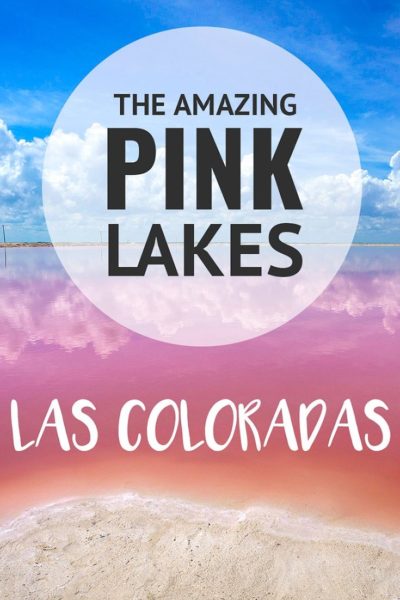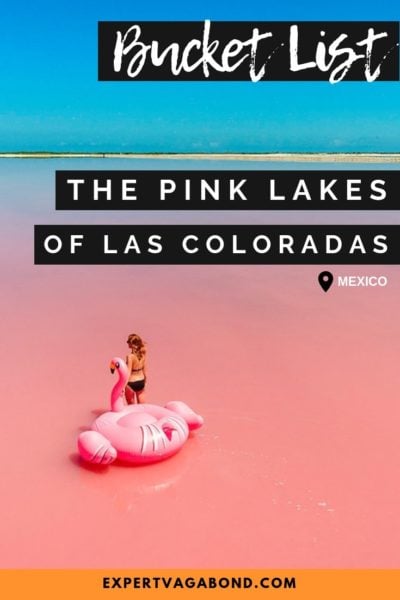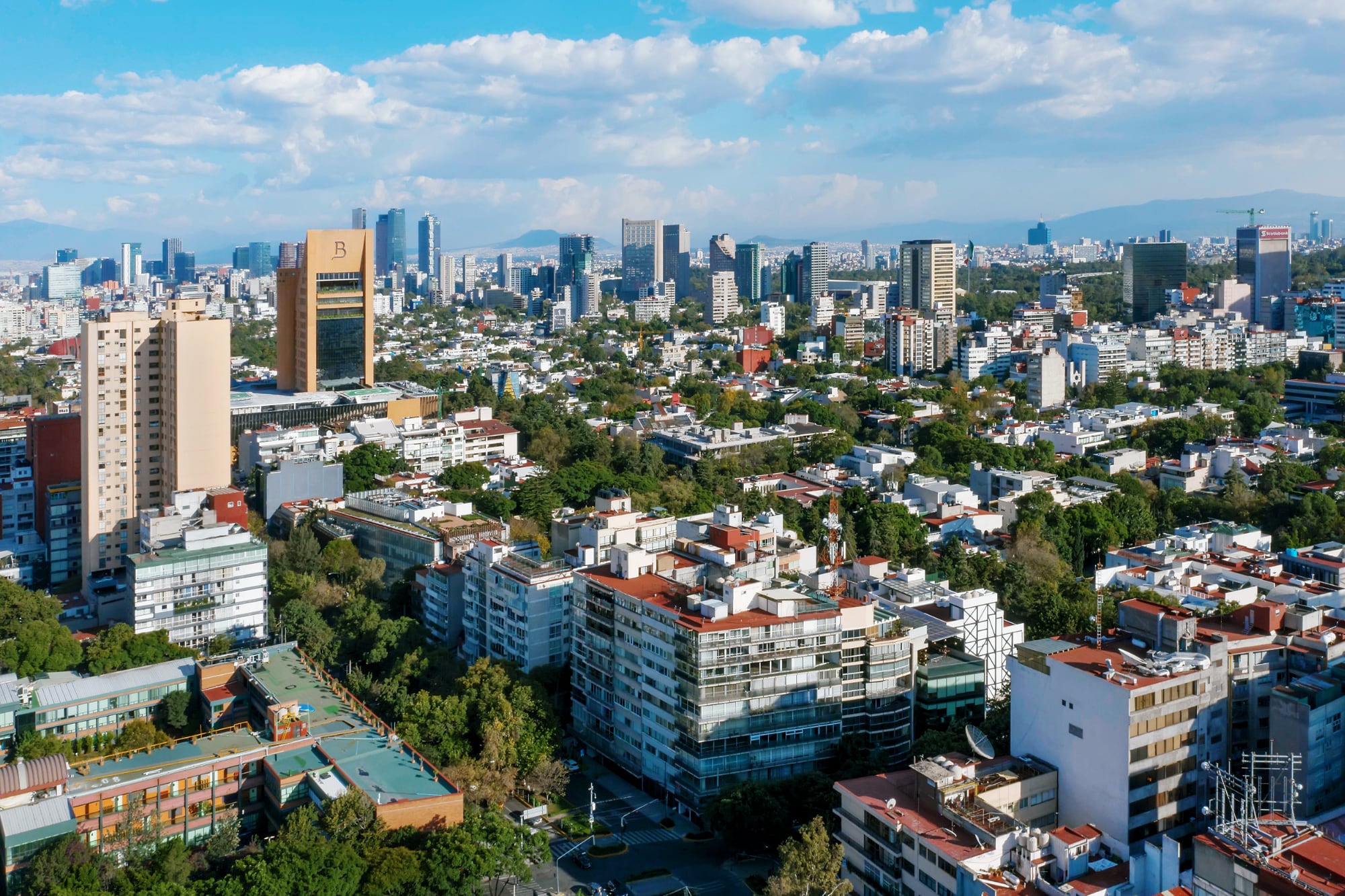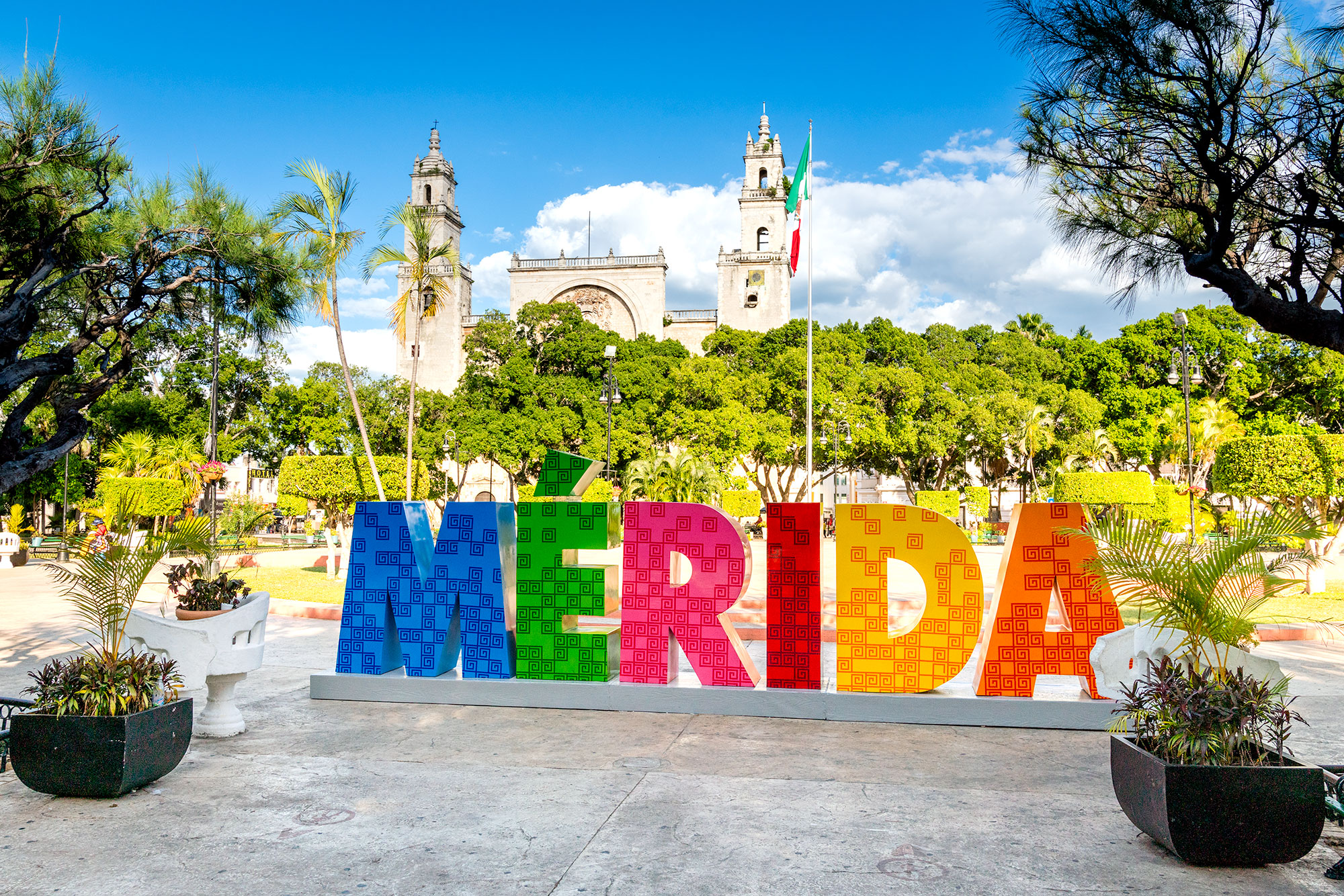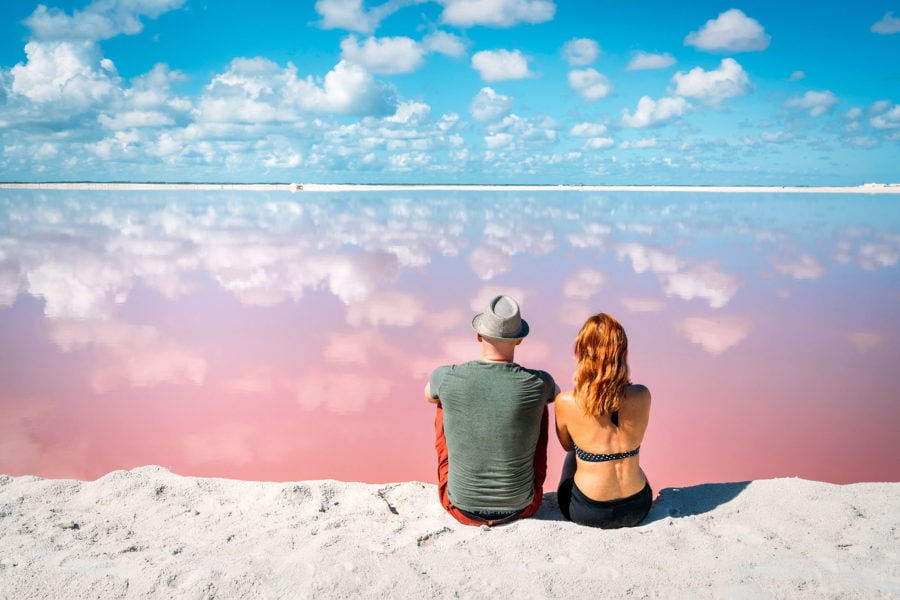
Las Coloradas, Mexico
Hidden away on the tip of Mexico's Yucatan Peninsula is a magical place full of color. These stunning cotton-candy pink lakes filled with salt are called Las Coloradas.
UPDATE: A lot has changed since we first visited these lakes. Entering the water near the salt factory is no longer allowed. The pink lakes are a bit more crowded, there's an entrance fee, a parking lot, and bus loads of tourists are normal.
Las Coloradas means "the colored" in Spanish. It's the name of a tiny Mexican fishing village with a population of 1000. Nearby, a series of brightly colored pink lakes cover the landscape on the edge of the Gulf of Mexico.
The region is part of the Río Lagartos Biosphere Reserve, a protected wetlands area home to animals like flamingos, crocodiles, sea turtles, jaguars, and all kinds of sea birds. The reserve covers some 150,000 acres.
Anna and I have visited Mexico's pink lakes a few times now, renting a car and driving up from Playa del Carmen to check out the biosphere reserve, but it's these strange pink lakes that really steal the show!
Travel Video: Pink Lakes Of Las Coloradas
Subscribe to my YouTube Channel for new Adventure Travel Videos!
(Click to watch Las Coloradas Pink Lakes - Mexico on YouTube)
Mayan Salt Production
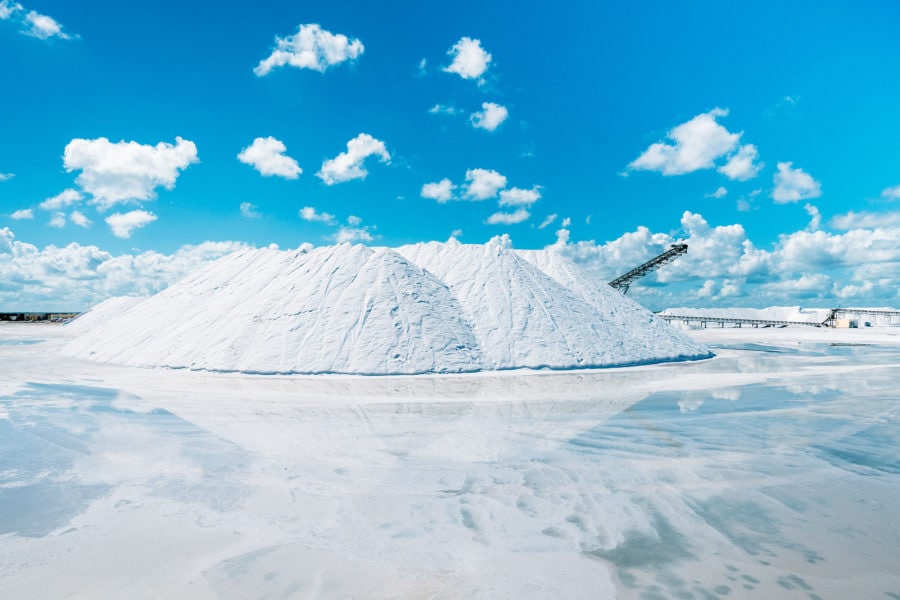
Fishing isn't the only industry here, sea salt harvesting is big business in Las Coloradas. It has been for thousands of years, when the ancient Maya (you know, the people who built Chichen Itza and other Mayan Ruins) used this area to produce highly valuable salt.
How do they do it?
Salty ocean water from the mangroves nearby floods onto hard flat salt plains, creating shallow lagoons. The sun then slowly evaporates this water, leaving fresh sea salt behind.
Salt was extremely important to the Maya for both nutritional needs as well as food preservation. It was mined here in the northern Yucatan then shipped by canoe to other parts of the Mayan empire.
Why Are The Lakes Pink?
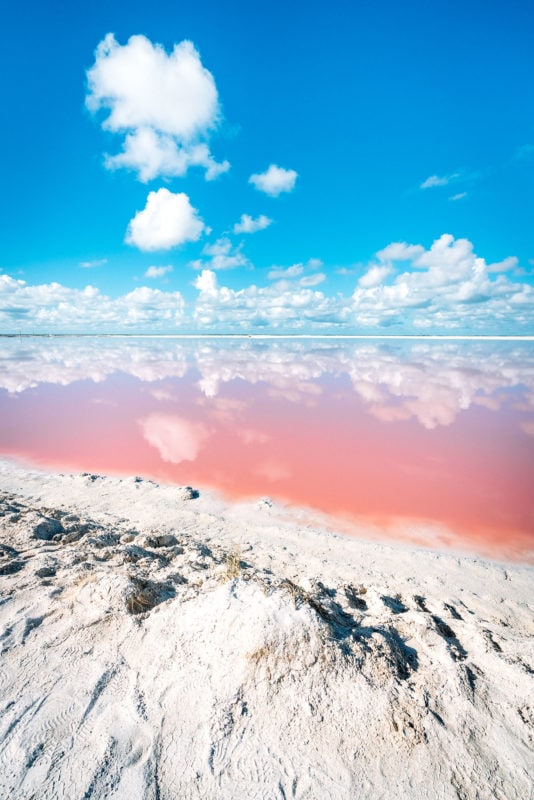
While this "solar salt" production process is a natural one, the large pink lakes of Las Coloradas that you can see today were built by a company who produces salt on a much larger scale (500,000 tons per year).
The vibrant pink color of these lakes is due to red-colored algae, plankton, and brine shrimp that thrive in the salty environment.
As the water evaporates, these organisms become more concentrated, glimmering pink in the bright Mexican sunlight.
Want to hear a cool fact? The reason flamingos are pink is because they eat these pink creatures. Normally their feathers are white, however, they change color after eating this stuff!
You can often find pink flamingos hanging out in the pink lakes.
Visiting Las Coloradas In 2021
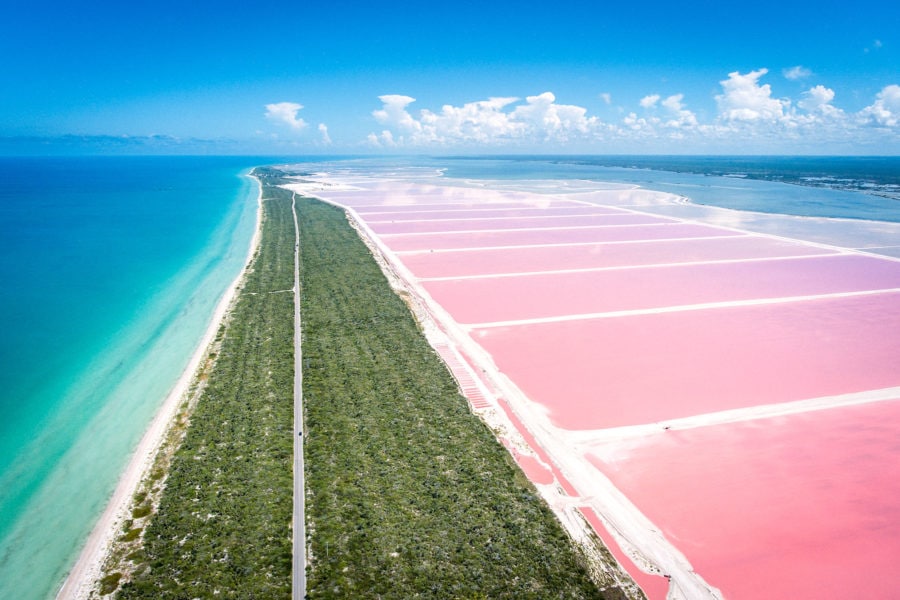
So, Las Coloradas has changed a lot since we visited back in 2016. What was once a unique and off-the-beaten-path experience has turned into a bit of a tourist trap due in part to the impact of Instagram and social media.
And I'm sure our visit, along with the popularity of our photos and videos from this special place, has unfortunately contributed to that effect.
I know this is cliche, but it used to be a lot cooler than it is now.
Currently the pink lakes are swarming with security guards, and stepping into the water is not allowed. They've built "moat" barriers to prevent people from getting too close.
- There is now an entrance fee of 75 pesos
- They've built cheesy looking photo-backdrops
- Tour buses stop here regularly
- "Fancy" big cameras are not allowed, only phones
- No drones are allowed
It's lost a bit of its magic...
Capturing the same kinds of photos that we took back then just isn't possible. Yet another travel destination that's been transformed forever by over-tourism.
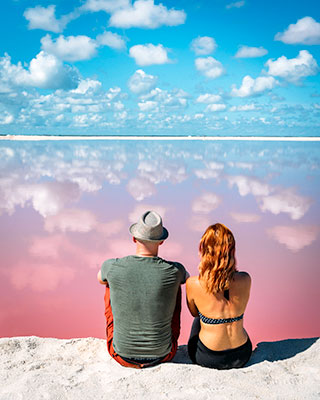
Pink Lake Tours
Cruise Rio Lagartos looking for crocodiles, visit the pink salt lakes, and marvel at Mexico's flamingo population.
Best Time To Visit
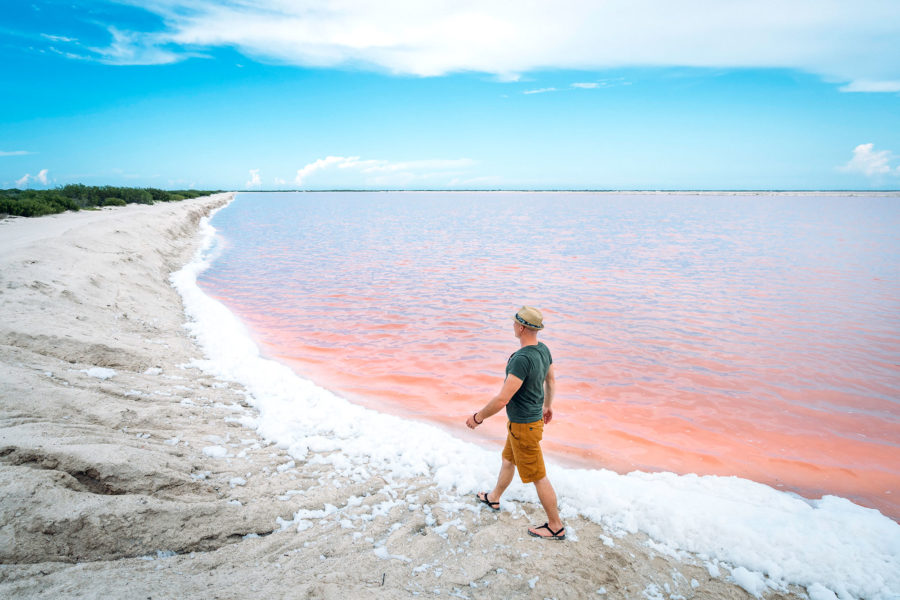
The way solar salt production works is that sea water gets fed into these man-made ponds, then slowly evaporates in the sun until the water is very shallow and full of red bacteria, plankton, and a thick layer of white salt at the bottom.
If you visit these lakes when they've recently been filled with sea water, they won't look pink at all. More of an orange & brown color.
The best time to visit is right before they harvest the salt, when the water level is low.
Now I don't know the exact schedule, but I can tell you we visited the lakes a few different times, and the best month for us was early October. The color was much more vibrant than of all the other times we visited.
Wind and cloud cover can also make a big difference. If it's windy, they won't be smooth and glassy. If it's cloudy, the pink color won't be as bright. If it rained recently, they won't be as clean due to runoff. So a bit of luck is involved too!
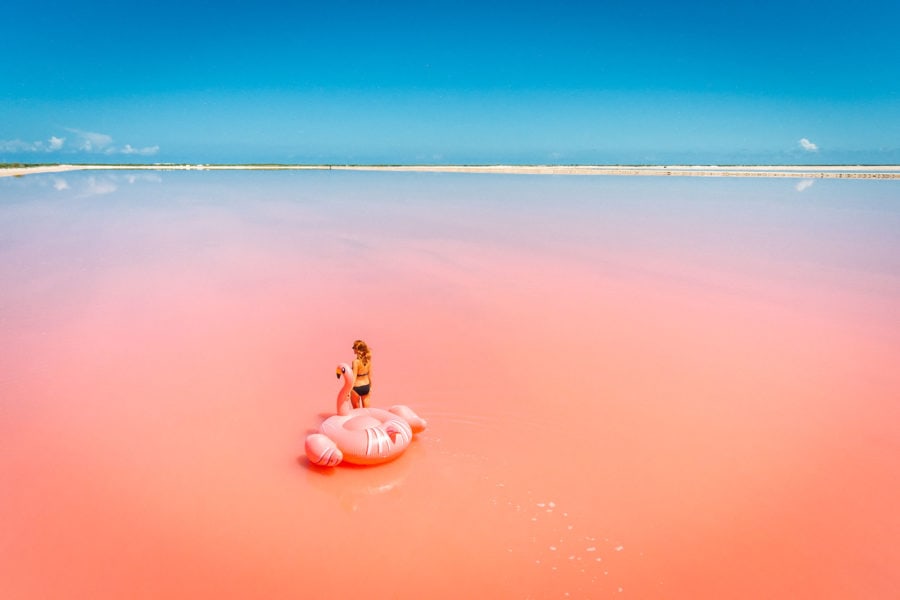
Getting To Las Coloradas
The amazing pink lakes of Las Coloradas are located off the beaten track a bit. Getting here requires a 3-hour drive from Cancun or Playa del Carmen -- 2 hours from Valladolid.
So you can do it as a very long day trip, or even better, spend 2 days in the area as there's some other stuff to do nearby in Rio Lagartos.
Rental Car
The best site to book your car is with Discover Cars. They search both local and international car rental companies to help you find the best possible price. This is the easiest way to rent a car and drive in Mexico.
CANCUN – Las Coloradas is 283 km (3.5 hours) from Cancun by car.
PLAYA DEL CARMEN – Lakes are 268 km (3.5 hours) from Playa by car.
TULUM – Las Coloradas 293 km (3.5 hours) from Tulum by car.
VALLADOLID – Las Coloradas is 139 km (2 hours) from Valladolid by car.
By Taxi
It's possible to hire a private taxi to drive you to Las Coloradas, but because it's so far away from most tourist towns like Cancun, it will probably cost a lot.
By Bus
There is a local ADO bus from Cancun to Rio Lagartos, but because of different stops/changes, the whole trip can take 7 hours. Renting a car like we did is much easier!
These days, there are also many tour buses that now visit Las Coloradas. Just stop into any tourist agency in Cancun or Tulum and I'm sure they'll set you up.
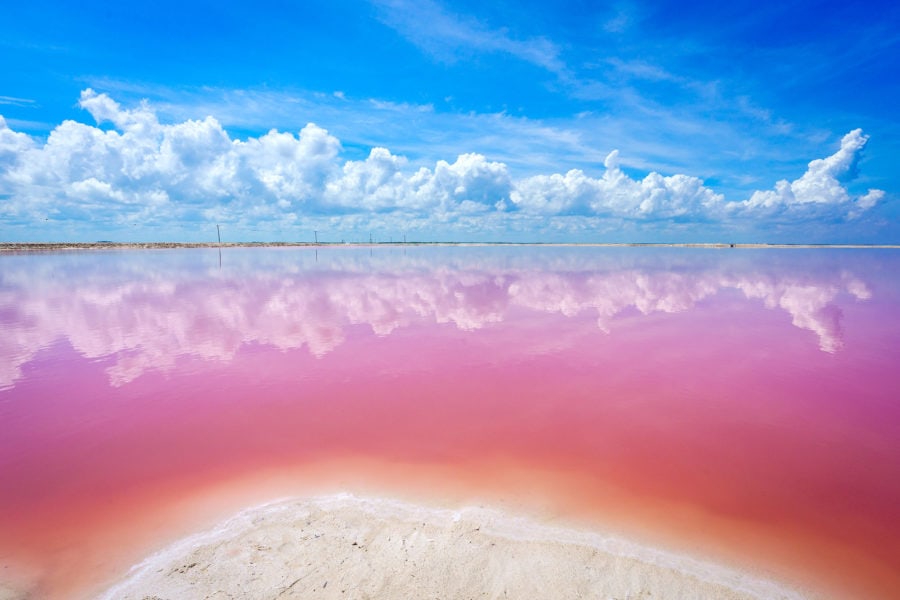
Beautiful Mexican Beaches Nearby
The road to Las Coloradas stretches along the coastline, with a few places to turn off and explore the white-sand beaches, dunes, and brilliant turquoise water.
The beach is a favorite stop for sea turtles, so be careful where you step! The turtles bury their eggs on the beach at night.
Where To Stay Near Las Coloradas
If you want to spend the night near Las Coloradas, there are hotels in Rio Lagartos, about 30 minutes away by car. Below you'll find good suggestions for places to stay near Las Coloradas depending on you're budget.
BEST HOTELS IN RIO LAGARTOS
BEST AIRBNB'S NEAR RIO LAGARTOS
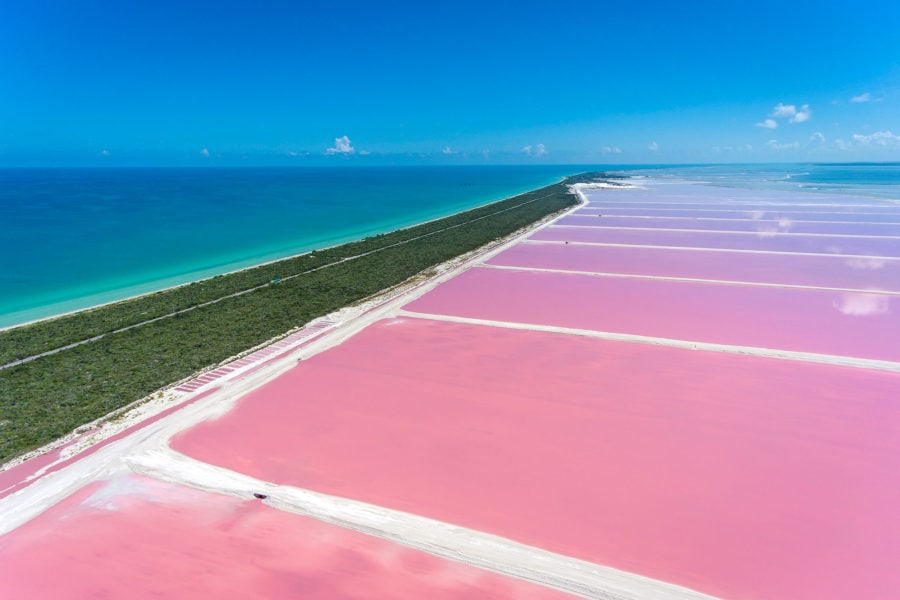
Enjoy Mexico's Pink Lakes!
Road tripping up to Las Coloradas on the Yucatan Peninsula can be a fun way to spend a sunny day in Mexico. The pink lakes show off their best colors in the sunshine.
Some of the roads are very narrow, so watch out for the large trucks making deliveries from the salt factory. They can hog the whole road.
The pink lakes of Las Coloradas is certainly a unique spot to visit! ★
| Travel Planning Resources For Mexico |
|---|
| Packing Guide Check out my travel gear guide to help you start packing for your trip. Book Your Flight Ready to fly? Here's how I find the cheapest airline flights. Rent A Car Discover Cars is a great site for comparing car prices to find a deal. Cheap Accommodation Learn how I save money booking hotels & vacation apartments. Protect Your Trip Don’t forget travel insurance! Protect yourself from possible injury & theft abroad. Read why you should always carry travel insurance. |
Enjoy This Article? Pin It!
READ MORE MEXICO TRAVEL TIPS
I hope you enjoyed my guide on the pink lakes in Mexico! Hopefully you found it useful. Here are a few more wanderlust-inducing articles that I recommend you read next:
- The Best Mayan Ruins In Mexico
- Swimming With Whale Sharks In Holbox
- Things To Do In Playa Del Carmen
- Rio Secreto: Exploring Mexico’s Water Caves
- Things To Know Before Visiting Chichen Itza
Have you ever seen pink lakes like this before? Any favorite spots in Mexico? Join the conversation on Facebook, Instagram, or Twitter to share!


